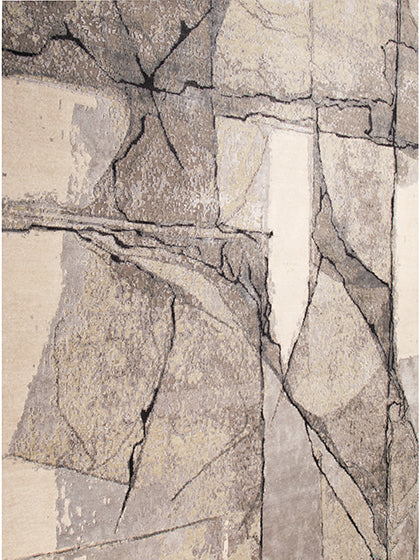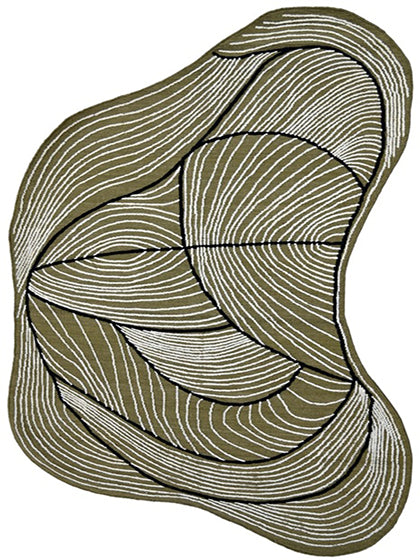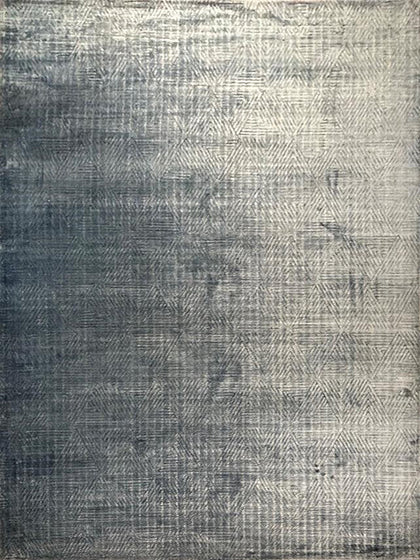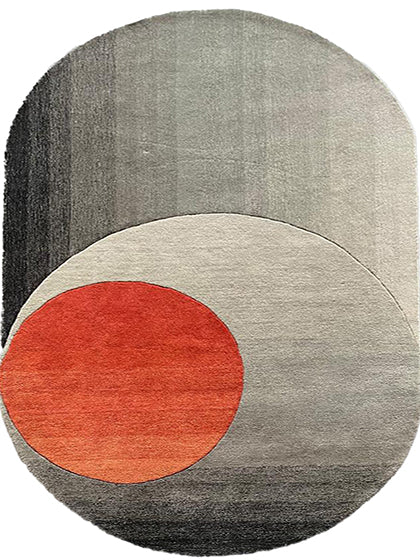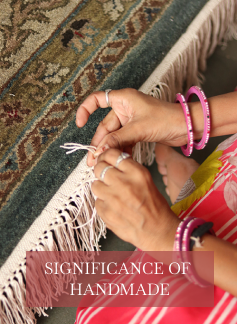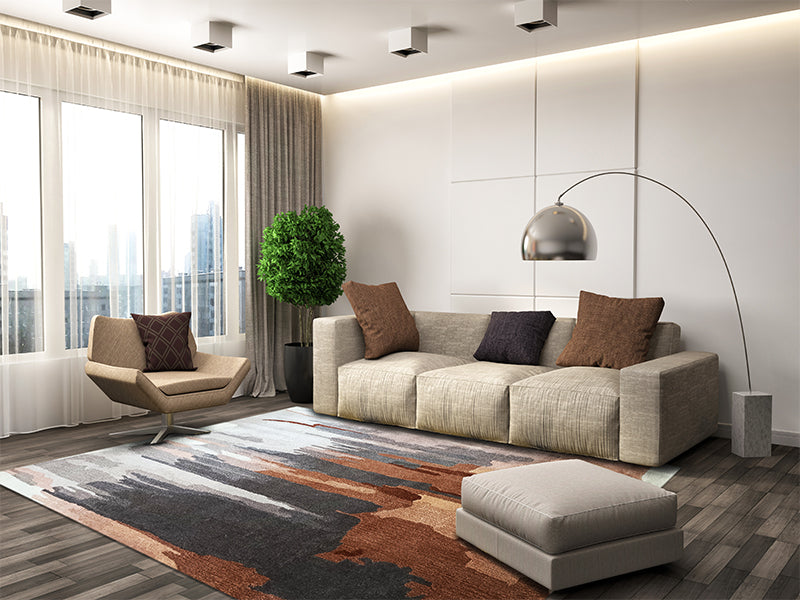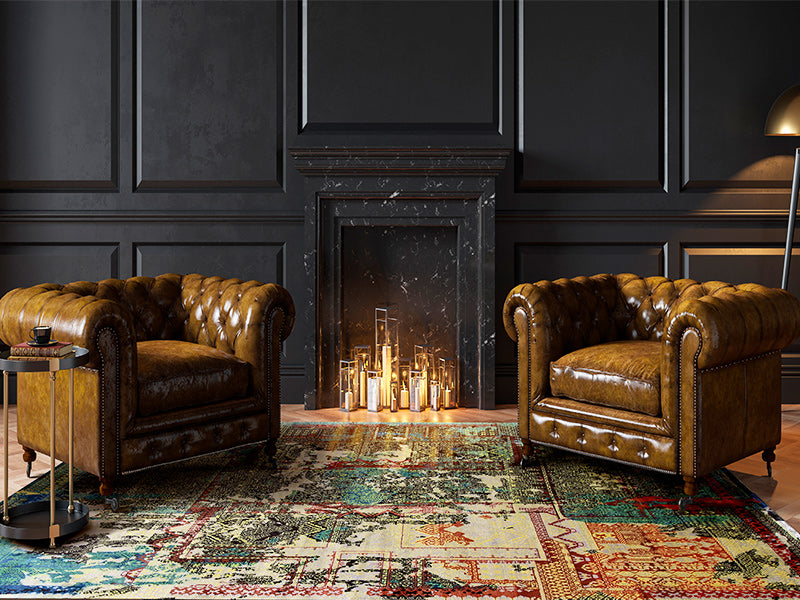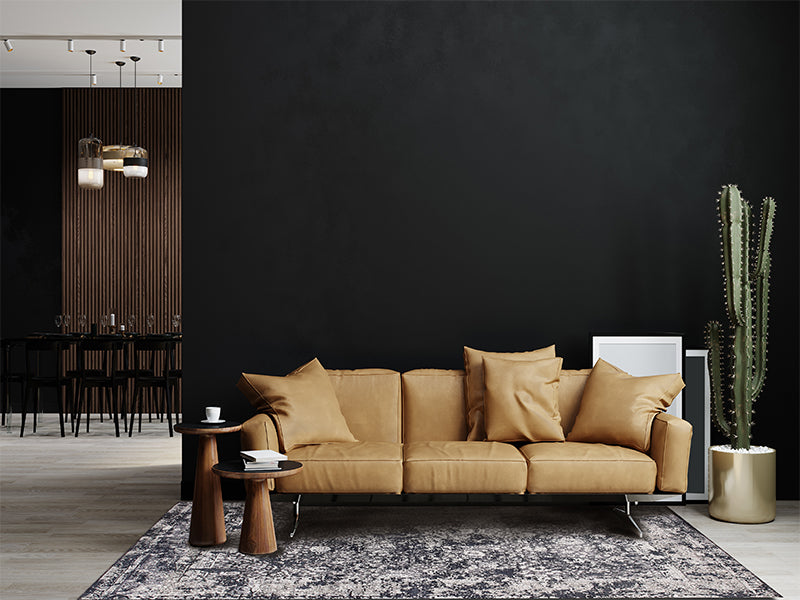When it comes to furnishings, nothing is as luxurious as a rug or carpet. Whether you prefer the softness of wool or the contemporary feel of sisal, there's no denying that rugs and carpets can bring warmth and character to any room. From an area rug that brings comfort and style to your living room to the perfect runner for your hallway—here's everything you need to know about choosing a new rug or carpet for your home!
Rugs
A rug is a large piece of cloth that serves as a floor covering. Unlike carpets, rugs do not cover the entire floor but are smaller and used to complement conversation areas in living rooms or beneath a table. Rugs are often not permanently attached to the floor, allowing them to be moved around a room or house. They can also be used as wall art or wall carpets when hung on a wall. They come in many shapes and sizes, from large rectangular rugs for living rooms or hallways to smaller oval rugs for bedrooms or bathrooms. Rugs are made of various materials, including nylon, wool and silk. They add comfort and beauty to any space and are easy to clean.
Carpets
A carpet is a thick, soft cover placed over your floor or stairs. Carpet and rug are commonly used to describe wall-to-wall and smaller floor coverings. Wall-to-wall carpets give the house a unified look by complementing its color scheme and style. Carpets are made in various colors and styles, so they're more likely to match your décor than rugs with an oriental motif. Carpets also provide an additional layer of insulation and warmth to the floor. As a result, you don't have to be concerned about walking on cold hardwood floors.
Similarities Between Rugs and Carpets
Rugs and carpets are both woven floor coverings. They can be made from natural materials such as wool or cotton and synthetic fibres like nylon. Rugs and carpets are designed to add warmth and comfort to the room they are placed in, whether it's a living room or bedroom.
Just like rugs, carpets come in many different styles, colors and shapes that fit any decorating style. You can choose one based on your need to use it anywhere in your home.
Differences Between Rugs and Carpets
Although rugs and carpets may look similar, they are extremely different floor coverings. There are a few rug and carpet differences and we’re going to examine these differences. Let’s jump right into it.
1. Size
Carpets tend to be larger than rugs, and they're often sold by square foot. Rugs can be customized in size and shape (and sometimes even color), so it's easy to find the custom rug that fits the dimensions of your room exactly how you want it—even if those dimensions aren't relatively standard.
2. Thickness
The other significant difference is that carpets are thicker than rugs and are often used in high-traffic areas of your home. Rugs are more decorative and can be placed in front of doorways or hallways to add extra color or style, while carpets are used as flooring in bedrooms, living rooms and dens.
3. Price
Rugs tend to cost more than carpets because they require more time and expertise to make. If you want something durable for high-traffic areas but don't need it to look good from across the room—such as in front of your couch—a carpet would be better suited than a rug.
4. Temperature Regulation
Rugs are better at regulating temperature than carpets. Because they are thinner and have air pockets, they keep your feet cooler in summer and warmer in winter. On the other hand, carpets offer more insulation from cold floors and are less likely to trap heat inside your home.
5. Durability
Carpets and rugs are both highly durable. They will last for years and withstand a lot of wear and tear—as long as you take care of them properly. However, carpets are more resilient than rugs because they're thicker and have more backing.
6. Portability
Rugs are much easier to carry around than carpets. Because they are lighter and smaller, you can move them around your apartment or home more quickly. Carpets are bulky and heavy, making them less portable than rugs.
7. Usage
You can use rugs to cover a smaller area, such as an entryway or hallway. They're also great for covering up stains on hardwood floors and protecting them from damage. Carpets are often used in bedrooms, living rooms, and dining rooms.
8. Attachment:
Carpets can be fixed in case of wall-to-wall carpets. They can also be secured as flooring and are immovable. Rugs on the other hand are not fixed to the floor and can be moved around your space as you wish.
Summary of Carpet Vs Rug
|
Carpet |
Rug |
|
|
Size |
Carpets are more on the big side and are sold per square foot. |
Rugs are smaller and can be customized to size. |
|
Thickness |
Carpets are thicker and great for high-traffic areas in your home. |
Rugs are more decorative and can be used as added decor to a space. |
|
Price |
Carpets are a more affordable option for flooring. |
Rugs are on the expensive side because they take longer to make. |
|
Temperature Regulation |
Carpets offer more insulation because they are on the thick side. |
Rugs regulate temperature more because they aren’t as thick. |
|
Durability |
With the right care and maintenance, it can last for years. |
With the right care and maintenance, it can last for years. |
|
Portability |
Carpets are heavier because they are thicker. |
Rugs are easier to carry because they are lighter. |
|
Usage |
Carpets are used in large spaces like bedrooms, living rooms, etc. |
Rugs can be used in smaller spaces like hallways, entryways, etc. |
|
Attachment |
Carpets are fixed and immovable. |
Rugs are not fixed and can be moved around your space. |
Fabrics Used in Making Rugs and Carpets
The type of carpet or rug you choose depends on the purpose for which you buy it. Many types of carpets are available in the market, each with different characteristics and features. The following are some of the most popular types based on fabric:
1. Wool carpets are soft to the touch and last long if properly cared for.
2. Bamboo silk is a popular material used in making rugs and carpets. It has a soft touch, can be used anywhere without compromising quality or comfort—and looks great!
3. Tencel is a type of fabric made from wood pulp. It is very light and easy to maintain, which makes it ideal for making rugs and carpets.
4. Rugs and carpets can also be made from Seagrass, another natural material. Seagrass fabric has a pleasant aesthetic appeal and comes in many colors that fit any design scheme.
5. Jute is another material used to make rugs and carpets. They are affordable and can be used for any décor scheme without compromising quality, style or comfort.
6. Sisal is yet another material used in making rugs and carpets, which has an elegant look but at the same time is durable enough to last
Weaving Techniques Used in Rug and Carpet Designs
Rugs and carpets can be made using a variety of weaving techniques. These include:
Handknotted
In this weaving technique, weavers knot threads together by hand to form a rug or carpet. The process is labour-intensive and produces intricately designed and high-quality rugs—making them one of the most expensive available. They have an elegant appearance and add warmth to any space they occupy.
Handtufted
As with the hand-knotted rug, this technique is very similar to its machine counterpart. The difference between the two is that, in this case, the weavers use hand-held tools to knot threads together instead of their hands. The main advantage of this type is that it can be cleaned easily without damaging its structure, unlike other more fragile types, such as hand-hooked rugs, where cleaning may cause premature wear over time due to the delicate nature of its construction.
Flatweave
These rugs feature flat bands woven tightly together, making them heavier than most other types but also very durable when properly cared for under normal conditions; however, these can be difficult for some people because they tend not only to look heavy but feel heavy too (mainly due weight) which will require extra effort when moving furniture out from underneath flatweave rugs.
Handhooked
Hand-hooked fabric pieces are sewn together to create larger sections of yarn and then tufted by hand. This type of rug is easy to clean and maintain, unlike some other kinds—such as flatweaves—which tend to be fragile.
Where to Find the Highest-Quality Rugs and Carpets
When buying a rug or carpet, it's important to remember that quality is not only the price tag. You should find something that will last through years of use but also look great when others see it.
If you are looking for a more high-end rug, look no further than Carpet Couture. Carpet Couture rugs and carpets are among the finest handmade, hand-knotted creations available today. These attractive carpets and rugs are made from high-quality materials like wool and pure silk that ensure longevity—and style! The natural hues and soft feel of rugs make them an appealing choice for any space—whether you're decorating a living room or office, installing wall art or laying flooring. Visit the Carpet Couture website today to design the carpet of your dreams.
Points to Keep in Mind While Choosing Rugs or Carpets for Your Space
There are specific points that you should keep in mind while choosing rugs or carpets for your space:
The room size will affect the rug or carpet you purchase. If your room is large, an oversized one would be ideal—covering more space and making a statement simultaneously. A smaller rug will work better if there is less space to cover.
The rug is meant to protect—hardwood, tile or carpet—is an important factor in choosing the right one.
Consider how much traffic flows through the room where you plan to place it.
The budget allocated for buying carpet.
The type of rug you choose can affect the room's overall look and feel. If you're looking for elegance, get a Persian rug with intricate designs and bright colors. If you have children or pets at home, then it is a good idea to choose carpets that are stain resistant and easy to clean.
Conclusion
In conclusion, the carpet and rug are two different things you can use in a house. Carpets are usually made of wool or synthetic fibres, and they're used to cover the floor. On the other hand, rugs tend to be smaller than carpets and woven from wool or cotton fibres—but nowadays, it's common for people to use a combination of materials when making them.
Carpet Couture is here to help make your imagination come true in a world of ever-changing trends and big ideas. We can create whatever you desire—from luxury carpets that are one-of-a-kind masterpieces to handmade rugs with unique designs inspired by nature. Your unique interpretation of luxury inspires us, and we strive to meet those expectations in our line of glamorous rugs. For more information about Carpet Couture's complete line of products and services, visit the website.
FAQS
What are the rugs & carpets made up of?
Rugs and carpets are both made up of various materials. Some rugs are made from natural fibres like wool, silk or cotton, while others are synthetic. Carpets are usually made from synthetic and natural fibres, such as wool.
What are the different places where rugs & carpets can be used?
Rugs and carpets can be used in a variety of areas. Both rugs and carpets are commonly used in kitchens, bathrooms and entryways. They're also great for adding style to other rooms, like living rooms or bedrooms.
Can you use a rug instead of a carpet?
Rugs are much smaller than carpets and can be used in the same places. You can also use a rug instead of carpeting if you want to add visual interest to your room without covering up too much floor space.
Are floor rugs similar to floor carpets?
Floor rugs and floor carpets are similar in that they're both used to cover the surface of a room. They can also be made from similar materials and come in many different styles. However, carpets tend to be thicker than rugs and contain more material.
Can I use a carpet as a rug?
You can make a rug out of your carpet remnants which is cost-effective and a smart way to match your room decor carpet and rug. But if you’re looking for all the benefits that a rug offers like movable, lighter, portable, etc, then you might need to buy a rug.
What is the difference between a carpet and a rug?
There are a few differences between carpets and rugs which are all mentioned above. Rugs are on the expensive side because they take time to make based on the customisation requirements. Although they are lighter and more portable than carpets. Check the table above for more differences.

